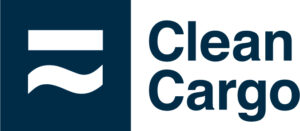
Air Quality and Climate Change
Air Quality and Climate Change
Our vessel engineering, operations, and Safety, Quality, Environment, and Security Departments have been focused on reducing vessel emissions for many years. Since vessel fuel usage is the largest contributor to greenhouse gas (GHG) emissions at Matson, increasing fuel efficiency, route optimization, and exploring alternative fuels have been important aspects of our strategy to reduce GHG emissions. Matson has retired all steamships from its fleet, and the new build main engines not only meet the IMO Tier II and Tier III standards for NOx emissions but are LNG capable.
Matson set a goal to reduce Scope 1 GHG emissions from our owned fleet by 40% by 2030 using a 2016 baseline. In order to achieve our 2030 goal, we currently believe we would need to have eight vessels operating on LNG by the end of the decade:
- Current Aloha Class vessels (Daniel K. Inouye and Kaimana Hila)
- Current Kanaloa Class vessels (Lurline and Matsonia)
- Manukai re-engined
- Three new LNG-ready vessels replacing the Alaska fleet
The International Maritime Organization (“IMO”) has set industry-wide GHG reduction goals, with two short-term measures to implement beginning 2023: The Energy Efficiency Existing Ship Index (EEXI) and the Carbon Intensity Indicator (CII). IMO is using the EEXI and CII to reduce the carbon intensity of international shipping by 40% by 2030, compared to 2008.
Effective January 1, 2020, the IMO has imposed regulations that generally require all vessels to burn fuel oil with a maximum sulfur content of 0.5 percent (“IMO 2020”). There are three main options for a ship to meet the new IMO 2020 requirements: (1) burn low sulfur fuel oil (“LSFO”), (2) install exhaust gas cleaning systems (commonly referred to as “scrubbers”) on vessels to purify exhaust from high sulfur fuel oil (“HSFO”), or (3) switch to lower-emission fuels such as liquefied natural gas (“LNG”). With respect to North America, all waters, with certain limited exceptions, within 200 nautical miles of U.S. and Canadian coastlines have been designated emission control areas (“ECAs”). Since January 1, 2015, U.S. Environmental Protection Agency regulations have reduced the fuel oil maximum sulfur content in designated ECAs to ≤0.1 percent.
All of Matson’s vessels in the Alaska and Hawaii services are compliant with IMO 2020 and ECA regulations and can use LSFO. In the Alaska service, Matson has installed scrubbers on its three diesel-powered ships to allow them to use HSFO and still comply with IMO 2020 and ECA regulations. In the Hawaii service, Matson installed scrubbers on seven diesel-powered vessels to allow them to use HSFO and comply with IMO 2020 and ECA regulations. Matson’s four new Aloha and Kanaloa Class vessels burn compliant LSFO. All of Matson’s other vessels will use LSFO to meet IMO 2020 and ECA emission standards.
All vessels owned by Matson calling California are equipped with shore power (sometimes referred to as alternative maritime power, AMP, or cold ironing) systems. When ships use shore power at berths, they shut down their main and auxiliary engines and power systems using the electrical grid. Matson was an early adopter of shore power, plugging vessels in for the first time in Long Beach in 2011. The California Air Resources Board did not require ships to use shore power at berths until 2014. In California after 2020, the electrical grid used by the vessels while on shore power is mandated to be at least 33% renewable, carbon-free power. In 2019, China's Port of Ningbo began efforts to make shore power berths available which will eventually allow Matson vessels to shut down their generator engines and go electric when berthed there.
Matson is proud to be a partner on a $50 million grant from the California Air Resources Board and a participant in the Sustainable Terminals Accelerating Regional Transformation (START) Project. At Matson’s Pier C terminal at the Port of Long Beach, the START Project will fund 34 pieces of zero-emission cargo-handling equipment, an electric-drive tugboat, five electric trucks at an off-dock container yard, and two heavy-duty truck charging outlets. At Matson’s Berth 63 terminal at the Port of Oakland, the START Project will fund five zero-emission yard tractors to shuttle containers within Matson’s marine terminal. Replacing diesel equipment with electric equipment eliminates local emissions of air pollutants, including toxic air contaminants, and GHG.
Matson participates in other voluntary programs to reduce emissions such as the Port of Long Beach Green Flag program, which encourages vessels to slow to 12 knots within 40 miles of the port. Slowing down reduces GHG and NOx emissions and is safer for marine wildlife. Since 2006, Matson has exceeded 90% compliance within the 20-mile speed reduction zone and has been consistently recognized as a top carrier by the Port of Long Beach. Matson also enrolls vessels calling Long Beach in the Environmental Ship Index (ESI) as part of the Port of Long Beach Green Ship program.

